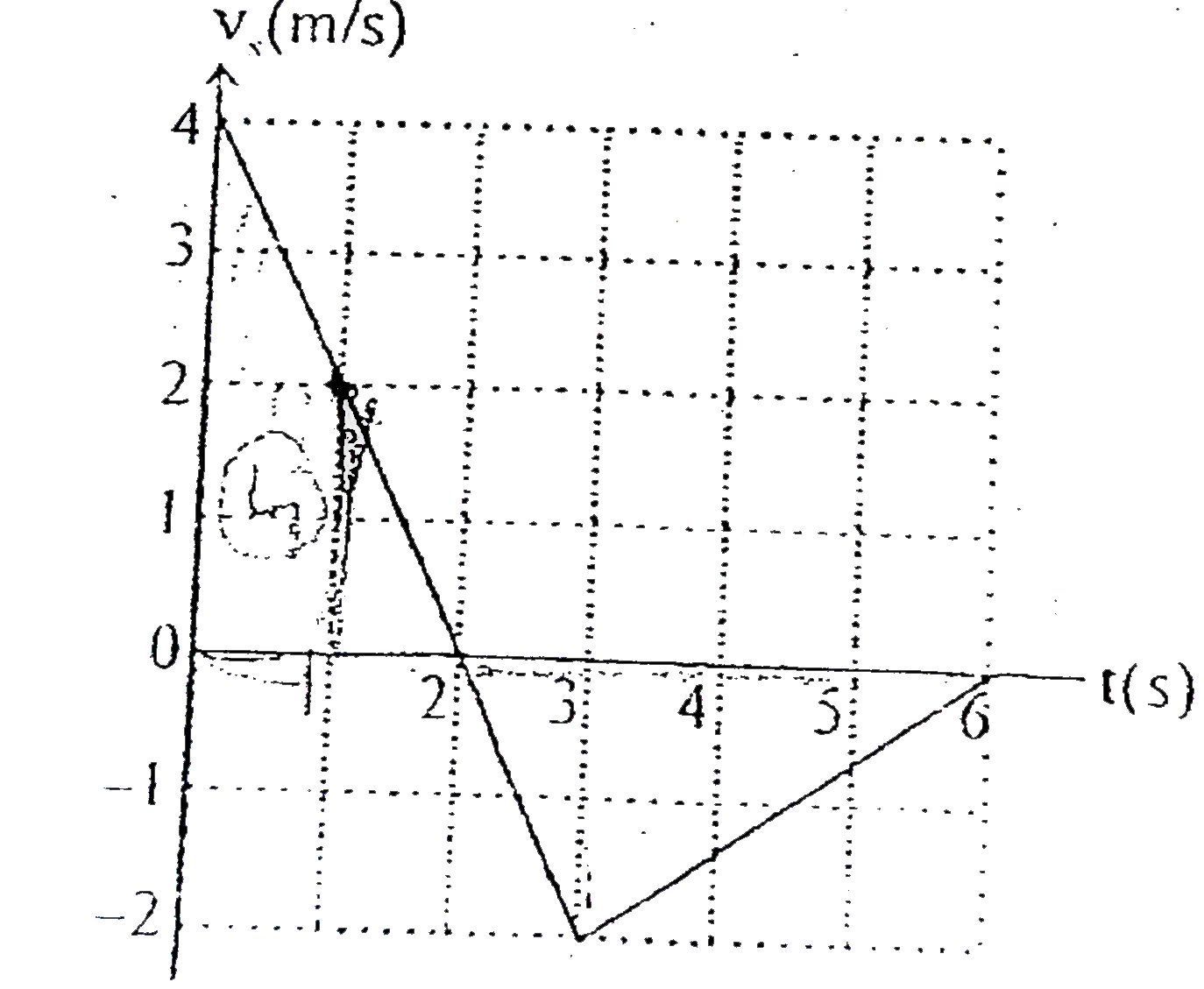In the following table the number of molecules N1 moving with definite velocity v1 m/s are given vi1.02.03.04.05.0Ni24682
. The mean speed of particle is –
3.2m/s
4.4m/s
5.2m/s
6.1m/s
To find the mean speed of the particles based on the given data, we can use the formula for mean speed, which is defined as:
Mean Speed=∑(Ni⋅vi)∑Ni
Where:
- Ni is the number of molecules moving with velocity vi.
- vi is the velocity of the molecules.
Step 1: Identify the values from the table
From the given table, we have the following values:
- Velocities vi: 1.0, 2.0, 3.0, 4.0, 5.0 m/s
- Corresponding number of molecules Ni: 2, 4, 6, 8, 2
Step 2: Calculate the numerator ∑(Ni⋅vi)
We will calculate Ni⋅vi for each velocity and then sum them up:
- For v1=1.0 m/s: N1⋅v1=2⋅1.0=2.0
- For v2=2.0 m/s: N2⋅v2=4⋅2.0=8.0
- For v3=3.0 m/s: N3⋅v3=6⋅3.0=18.0
- For v4=4.0 m/s: N4⋅v4=8⋅4.0=32.0
- For v5=5.0 m/s: N5⋅v5=2⋅5.0=10.0
Now, summing these values:
∑(Ni⋅vi)=2.0+8.0+18.0+32.0+10.0=70.0
Step 3: Calculate the denominator ∑Ni
Now we will sum the number of molecules:
∑Ni=2+4+6+8+2=22
Step 4: Calculate the mean speed
Now we can calculate the mean speed using the values we found:
Mean Speed=∑(Ni⋅vi)∑Ni=70.022≈3.18 m/s
Final Answer
The mean speed of the particles is approximately 3.18 m/s.
---
- Ni is the number of molecules moving with velocity vi.
- vi is the velocity of the molecules.
From the given table, we have the following values:
- Corresponding number of molecules Ni: 2, 4, 6, 8, 2
We will calculate Ni⋅vi for each velocity and then sum them up:
- For v2=2.0 m/s: N2⋅v2=4⋅2.0=8.0
- For v3=3.0 m/s: N3⋅v3=6⋅3.0=18.0
- For v4=4.0 m/s: N4⋅v4=8⋅4.0=32.0
- For v5=5.0 m/s: N5⋅v5=2⋅5.0=10.0
Now we will sum the number of molecules:
Now we can calculate the mean speed using the values we found:
The mean speed of the particles is approximately 3.18 m/s.
Topper's Solved these Questions
- KINETIC THEORY OF GASES BOOK - MOTIONCHAPTER - KINETIC THEORY OF GASES EXERCISE - EXERCISE-3 SECTION-A
23 Videos
- KINETIC THEORY OF GASES BOOK - MOTIONCHAPTER - KINETIC THEORY OF GASES EXERCISE - EXERCISE-3 SECTION-B
16 Videos
- KINETIC THEORY OF GASES BOOK - MOTIONCHAPTER - KINETIC THEORY OF GASES EXERCISE - EXERCISE-1
56 Videos
- KINEMATICSBOOK - MOTIONCHAPTER - KINEMATICSEXERCISE - EXERCISE 4 PREVIOUS YEAR (LEVEL 2)
6 Videos
- LOGIC GATESBOOK - MOTIONCHAPTER - LOGIC GATESEXERCISE - EXERCISE - 2
10 Videos
Similar Questions
In the following table the number of molecules N1 moving with definite velocity v1 m/s are given vi1.02.03.04.05.0Ni24682
.In the above question, the root mean square speed of particle is –
View SolutionThe value of current, I, flowing in a given resistor for the corresponding values of potential difference, V, across the resistor are given below :
I(ampere)0.51.02.03.04.0V(volt)1.63.46.710.213.2
Plot a graph between V and I and calculate the resistance of the resistor.
View Solution
Knowledge Check
Given the set of vectors v1=(1,2,3):v2=(1,0,1) and v3=(0,1,0)
Athe set of vectors are not linearly independentBthe set of vectors are linearly dependentC(1,2,3)+(1,0,1)+(0,1,0)=0D(1,2,3)+(1,0,1)+(0,1,0)≠0In a multi -electron atom, which of the following orbitals described by three quantum numbers will have the same energy in the absence of magnetic field ?
(i) n = 1, I =0, m =0 (ii) n = 2, I = 0 , m = 0
(iii) n = 1, I = 1, m =1 (iv) n = 3, I = 2, m = 1
(v) n = 3, I=2, m = 0A(I) and (II)B(II) and (III)C(III) and (IV)D(IV) and (V)The volume of a gas and the number of gas molecules within that volume for four situations are
(1) 2V0andN0 (2) 3V0and3N0
(3) 8V0and4N0 (4) 3V0and9N0
Which of them has mean free path greatest?A1B2C3D4
The velocities of ten molecules of any gas are given v,0,2v,4v,3v,2v,v,3v,5v,v. Calculate their root mean square velocity.
View SolutionBy plotting the following points check whether they are collinear or not
(i) (1,1),(2,2),(4,4)
(ii) (1,0),(−3,0),(0,0)
(iii) (2,−2),(0,0),(−3,4)
View SolutionA body of mass m1 moving with an unknown velocity of v1ˆi , undergoes a collinear collision with a body of mass m2 moving with a velocity v2ˆi. After collision m1andm2 move with velocities of v3ˆiandv4ˆi, respectively. If m2=0.5m1andv3=0.5v1 , then v1 is v4−v2x, where x is _________.
View SolutionA particle of charge q and mass m starts moving from the origin under the action of an electric field →E=E0ˆiand→B=B0ˆi with a velocity →v=v0ˆj. The speed of the particle will become 2v0 after a time.
View SolutionVx is the velocity of a particle of a particle moving along the x−axis as shown. If x=2.0m at t=1.0s, what is the position of the particle at t=6.0s?

View Solution
